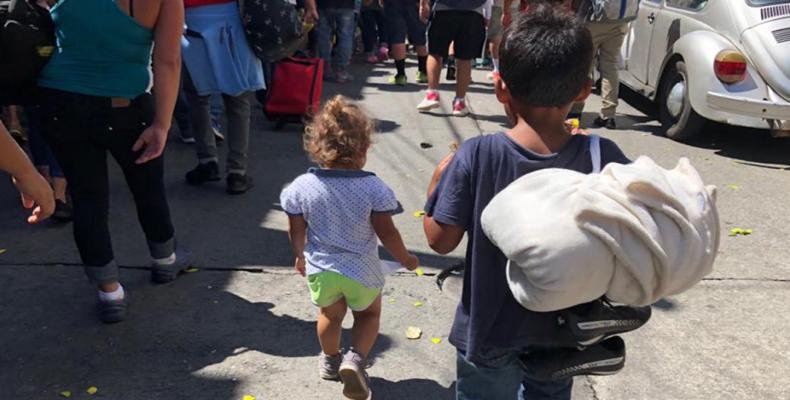The announcement that three underaged-children -- confined in a detention center for migrant kids in New York -- tested positive for COVID-19, brought to light the vulnerability of infants who, alone or accompanied by their parents, had to leave their country in search of a better future.
There are no exact statistics on how many young migrants left Mexico or the Central American Northern Triangle, nor how many are stuck on the U.S. border, living in meager camps or crowded temporary shelters.
There is also no precise information available about those who were taken away from their parents when they tried to cross the border, or those captured while traveling by themselves.
U.S. immigration authorities themselves acknowledge that they had lost track of thousands of these victims, who were handed over to guardians or relatives, but proper follow-up was given, even when their parents were deported to their home country.
The inhumane separation of families represented such a cruel act that it sparked widespread rejection of President Donald Trump, the main promoter of the so-called "zero tolerance" policy against undocumented migration.
These measures were directed not only to the children who arrived at the southern border, but also against many born in the United States whose parents were waiting for a response to their asylum request.
It is known that in San Diego County -- in the U.S. state of California -- more than 1,100 minors were subjected to such measures, including some newborns who were handed over to the state child protection service, and their mothers had been deported back to Mexico.
In the face of the threat of the new coronavirus pandemic, there are large numbers of children in danger. Humanitarian organizations denounced that the detention centers do not offer antiseptic, soap is a scarce luxury and medical attention is very limited.
Moreover, those who are trapped on the border of Mexico have it worse, inasmuch as getting food and drinkable water is a daily struggle.
The aftermath of the pandemic for these migrant children, who are between oblivion and abandonment, entails a gloomy prediction, since they suffer from poor hygiene. Many also suffer from hunger and are malnourished.
The World Health Organization has already warned that not only the elderly or people with chronic diseases die from this disease. Children, adolescents and young people are already among the victims. So there is no warning that can be considered too much to protect those who practically have absolutely nothing. Hopefully there will be receptive ears to respond to those pleas.


